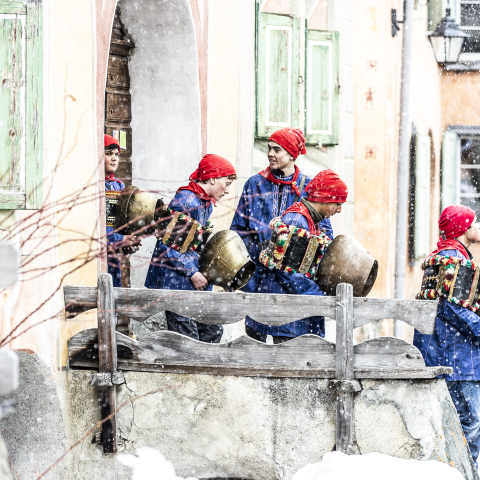Customs
Hom Strom
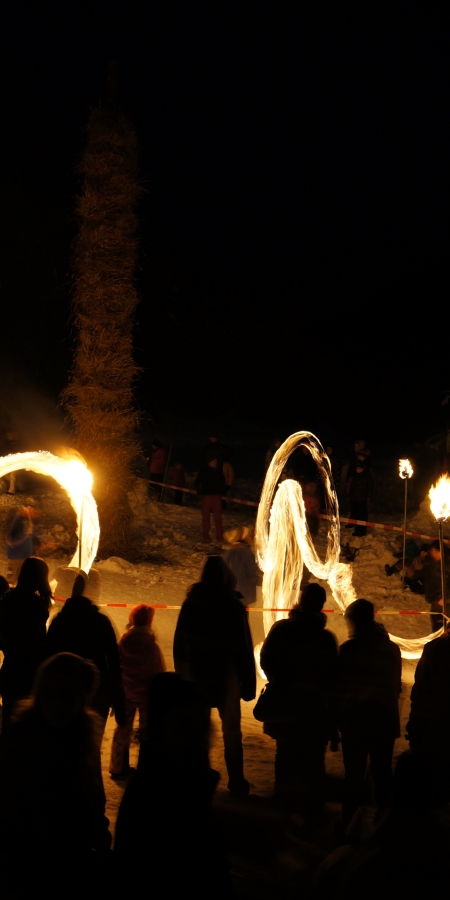
About the tradition
On the first Saturday in February, the students meet on «Plaz», the village square of Scuol, to produce the Hom Strom. To do this, they twist arm-thick strings of threshed rye straw, which is prepared in the afternoon. As a high-growing cereal, rye is particularly suitable for twisting into strands thanks to its long stalks. In earlier years, when rye straw was still available in large quantities, each part of the village had its own «Hom Strom». And everyone of course wanted the biggest and most beautiful one. After setting them up at their respective locations, they had to be strictly guarded, because each part of the village tried to light the Hom Strom of the others prematurely to expose the creators.
Rye straw rarely and harvested by hand
Today rye straw is rare in the Lower Engadine. In addition, it has to be harvested by hand for the construction of the Hom Strom, because the combine harvester would break the straws. This is why Anton à Porta, a farmer from Scuol, has for years provided a sufficiently large rye field especially for the purpose of building the Hom Strom. The straw is then harvested at the right time by the high school teachers with the help of their students, tied into sheaves and later brought to the barn of the community below Plaz for storage, where it awaits its last use.
Clear division of labour when winding the straw man
The straw strands are twisted as tightly as possible around a pole about 9 metres long. Each school class has its own tasks: While the youngest ones are constantly supplying new straw, the students from the fifth primary class upwards form it into endless strands, which are then slowly pressed forward to the actual straw man. During the spectacle on Plaz, the students of the third primary class sell cake and punch for the benefit of the class tills, while the fourth class tries to keep order on site. At the Hom Strom himself, the stronger pupils of the upper school, under the supervision of the teachers, wrap the resulting strands of straw as tightly as possible around the pole, which is carefully turned on its own axis by four people lying like a winch on massive wooden blocks. Within a few hours the Hom Strom grows to a stately thickness of one and a half metres in diameter.
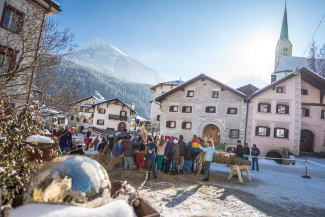
The evening programme.
The fire of Hom Strom
Before it is dark, the 9-metre high and 500 kilogram heavy Hom Strom is transported over the Inn bridge to Gurlaina, where it is set up by the teachers with representatives of the local council. At dusk it is protected from boyish pranks by guards. Young and old soon move up to admire the work of the afternoon and wait for the big moment. At exactly 8pm, the straw man, created with great effort, is lit. The oldest boys throw their fireballs made of petrol soaked rags, with which they have illuminated the area, onto the Hom Strom with the chime of the bell and set it on fire. Now the children and also the adults who attend the spectacle sing the Hom Strom song. The poet and singer Men Rauch from Scuol wrote this song especially for this occasion. After a quarter of an hour the spook is over, the crowd slowly returns to the village, while some locals still discuss the interpretation of the flames and the resulting prognoses.
Origin of the custom probably pagan
Little is known about the origin of the custom, all the more speculation is allowed. According to the age of the custom and the traditions, the root can probably be found in the cultic and pagan area. The development of the position of the sun in February suggests that the pagans sacrificed part of their grain and straw harvest to the sun god in the hope of a good summer. Like many a custom of pagan origin, the Hom Stream has been Christianised over time, so that today no sun god is worshipped and nothing is explicitly sacrificed.
Flames as a forecast for the summer harvest
Nevertheless, people still try to elicit a prognosis for the next summer from the fire of Hom Strom: It is still said that one can read from the flames how the next harvest will turn out. The burning time is less important than the wind direction, which ideally changes several times, so that the flames flicker in all directions.
No matter how and how long the Hom stream burns: the typical Scuol custom is a wonderful celebration for locals and guests alike and an important «milestone» in winter, which is a popular event every year.
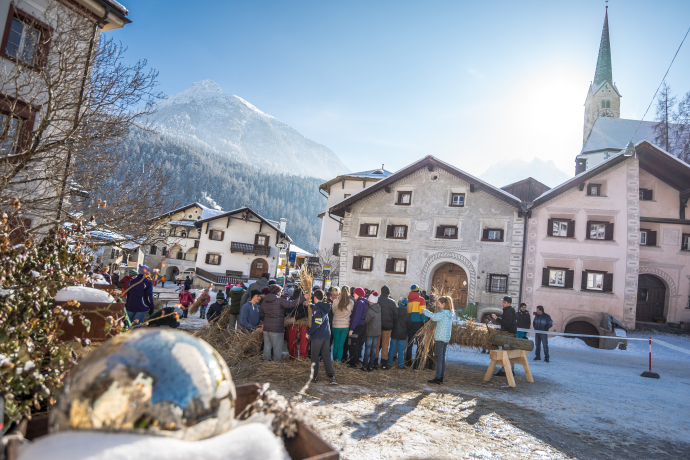
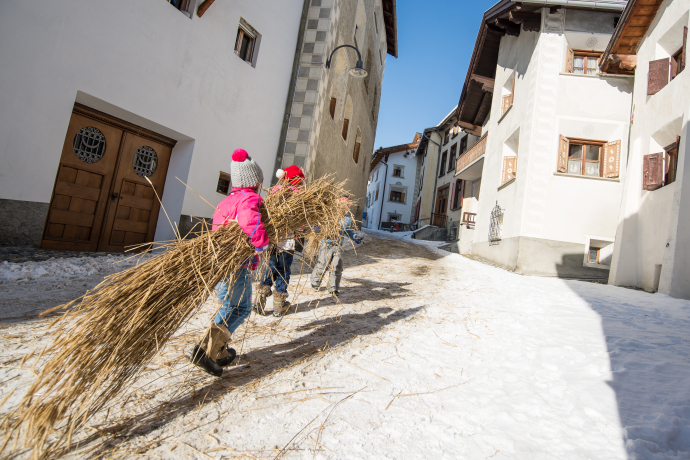
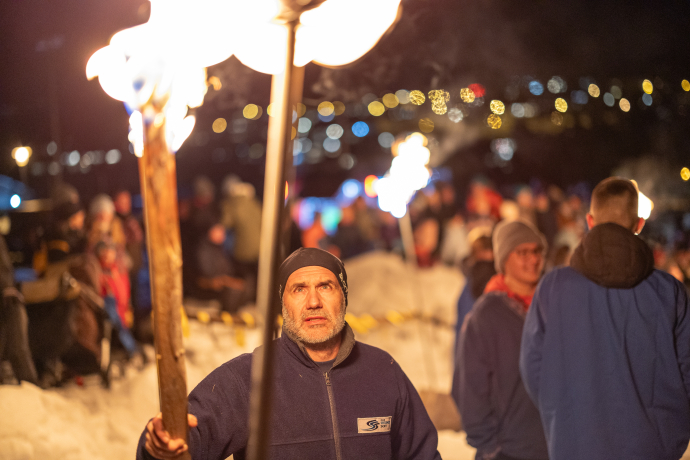
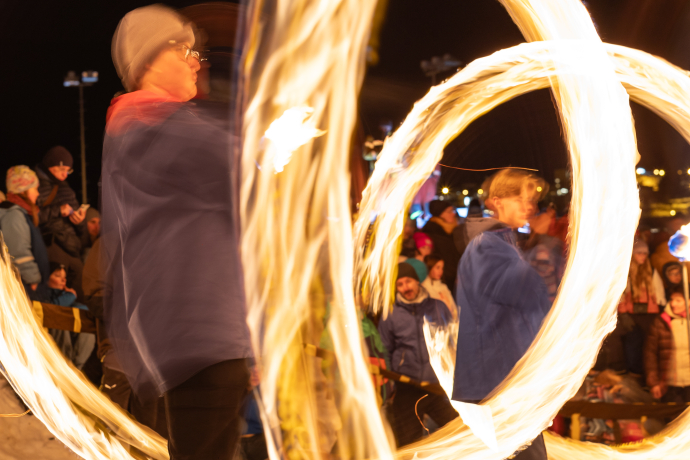
Show all 7 images
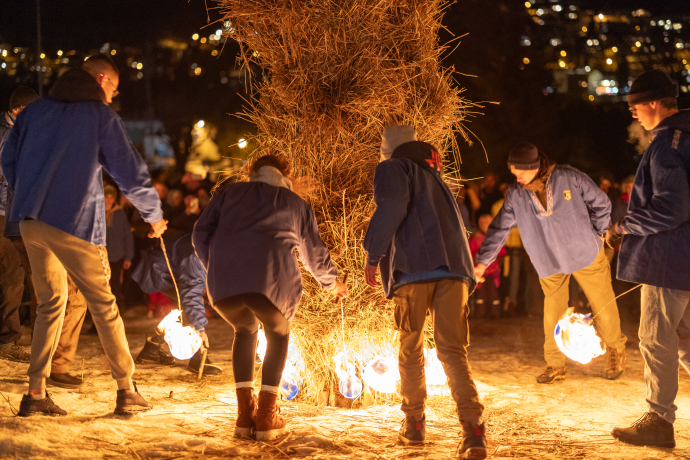
To sing along.
Song: «Chanzun dal Hom Strom» by Men Rauch
L'Hom Strom es ün bel hom
ün hom da nom e pom
chi metta sü il buol
a nos cumün da Scuol
Cul strom cha’ls paurs ans dan
ils mats las cuas fan
plajond sün ün lattun
infin ch’el es grondun
Dret sü til implantain
la saira til ardain
e tuot la glieud dal lö
s’allegra da seis fö
las flammas van in ot
portand al segner lod
chi’ns dosta dal malom
eviva nos Hom Strom
The Hom Strom is a handsome man
A very righteous man
That of our community Scuol
Stamp the stamp
From the straw that the farmers give us
the boys make the ropes
and wrap it around the pole.
until He (the Hom Strom) is really big.
Let's get him upright.
In the evening we burn it.
And all the people from the village...
enjoy its fire.
The flames are going up
and bring praise to the Lord,
that keeps us from evil.
Long live our Hom Strom!
